
Doublehanded Farallones Takes It Easy
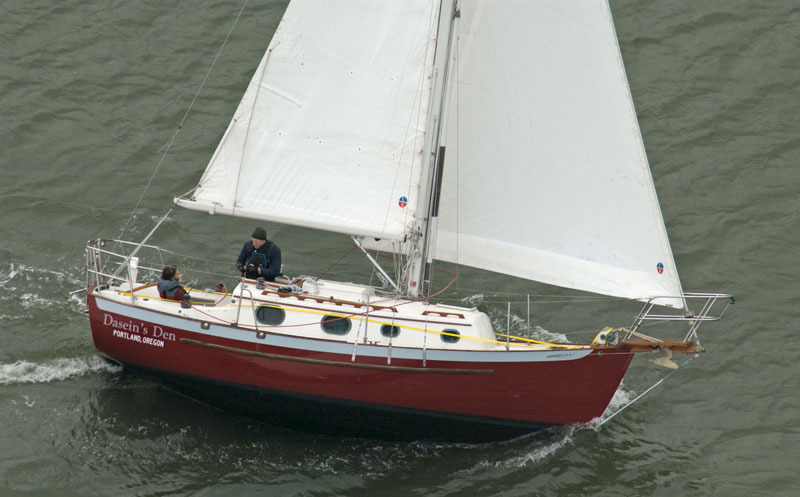
Light air forced a postponement of the start of BAMA’s Doublehanded Farallones off Golden Gate Yacht Club on Saturday morning. The sequence, slated to begin at 7:55 a.m., was delayed for 40 minutes. The slow-boat division started — and then the race committee postponed again to wait for those boats to get across the startline while a countercurrent pushed back against them. The predicted ebb was behaving strangely. At the Golden Gate Bridge, instead of going out the Gate, strong currents rushed sideways toward the San Francisco shoreline and bouncing back off it.
Weird and wacky currents near the Golden Gate Bridge. Note the postponed racers milling about in the background.
©2017 www.norcalsailing.com
Once racing finally got underway, the crews who stuck it out had a pleasant day on the ocean. Last year’s winning skipper, Mark Eastham, sailed his F-31R Ma’s Rover with Cam Tuttle as crew. This year was nothing like last year’s wild and windy ride. Eastham said it was “Fun, a walk in the park, easy as could be, with 5-15 knots of wind and water flat as a pool table. The Farallones looked like they’d been washed and rinsed clean, with green poking through and hardly any surf at all.” Tuttle, sailing his first Farallones race, saw some whale spouts near the rockpile. “Mark and I also saw a lot of grungy crab pot gear in the water, looking like they had been soaking for a while, out by the weather buoy.”
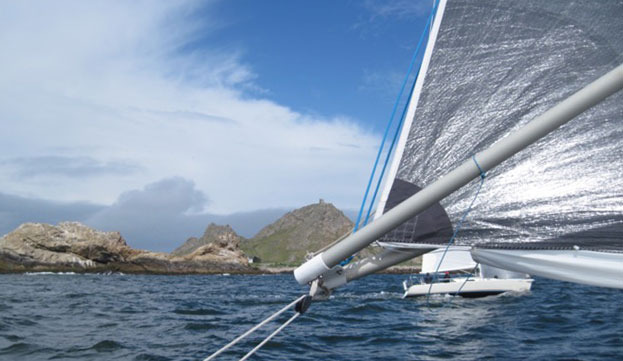
Pat Broderick, sailing with Ross Bliven on the Wyliecat 30 Nancy, called it “Picture perfect and one of the best Farallon races among the 75 or so I’ve participated in. Nice south wind — perfect for ‘Wylie reaching’ and not so good for our spinnaker competitors. It was a reach/close reach out and a broad reach turning into a run once we were inside Lands End on the way back. No tacks and only the ‘Farallon Jibe’ on the backside of the Island.”
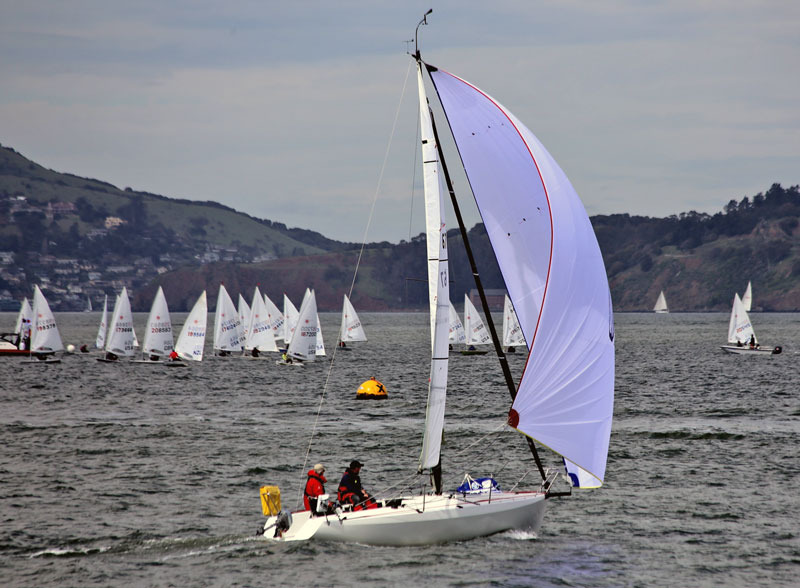
New this year were three alternate shorter courses, called the Race to the Weather Buoy (Lane Splitter),To the Bar and To the Sea. All courses had takers. Posting the fastest corrected time for the full Farallones course were Greg Nelsen and Randy Miller on Nelson’s Azzura 310 Outsider. The Singlehanded Sailing Society earned the Pineapple Sails Team Trophy. We’ll publish results in the April issue of Latitude 38; in the meantime, check them out here.
What Is Both Legal and Illegal?
While marijuana gradually continues to be decriminalized and quasi-legalized across the country, transporting cannabis by boat, especially in large — or massive — quantities, is still likely to land you in jail.
Prompted by the Los Angeles Harbor Port Police’s March 14 discovery of an abandoned boat loaded with several hundred pounds of marijuana, we were inspired to review current pot laws, and consider how California’s evolving attitudes reconcile with strict maritime rules — and how the state’s estimated $2 billion-a-year "medical marijuana" industry fits into the picture.
Last November, Proposition 64 legalized the use of recreational marijuana in California, which was the first state in the union to legalize medical cannabis in 1996. The recreational-use law goes into effect on January 1, 2018. Nevertheless, possession of weed on boats will remain a serious no-no.
Despite multiple states’ saying yes to recreational cannabis, the federal government still considers marijuana a "Schedule 1 narcotic," a category shared by heroin and LSD.
That means that the Coast Guard continues to frown upon possession and use on boats, to put it lightly. Regardless of state and local legislation, the CG still maintains a "zero tolerance” policy for possession of any amount of marijuana on any vessel, and has confiscated many boats during the last 30 years while enforcing that policy.
And that’s just the Coast Guard. The current Homeland Security umbrella has multiple agencies tasked with combating smuggling. These efforts are focused on high-volume trafficking, but reinforce the federal government’s attitude toward weed on California waters.
The bottom line for boaters: Even if pot becomes completely legal ashore, out on the water it will still be a major taboo.
Opening Day Turns 100
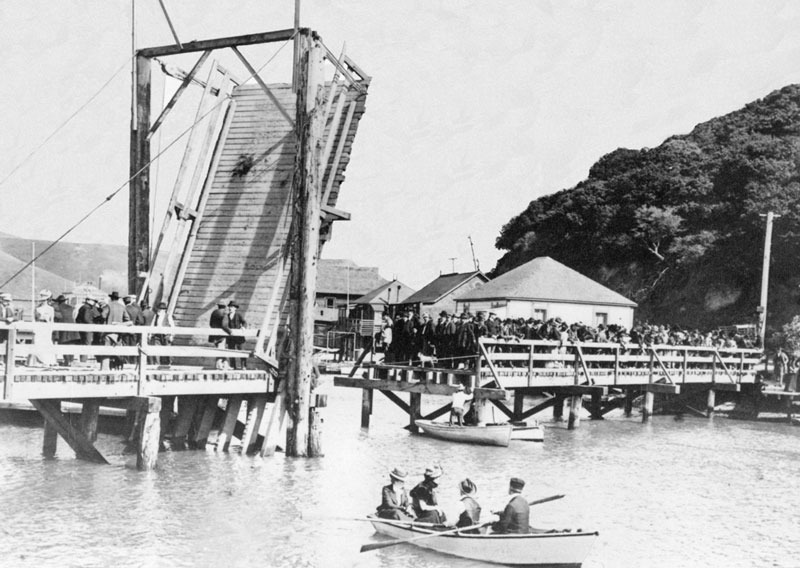
In April 1917 Woodrow Wilson decided it would be a good idea to join the ‘war to end all wars’. In the same month, 100 years ago, sailors on San Francisco Bay decided it would be a great time to celebrate the much more pleasant tradition of Opening Day.
The term ‘Opening Day’ was used in the early 1890s when it was associated with the first activities of individual yacht clubs celebrating the spring season. It gradually became identified with the manual opening of the bridge at Corinthian Island in Belvedere. Yachtsmen and local residents watched as sailboats and arks passed through the opening. The vessels had been stored in Belvedere Lagoon to protect them from the ravages of winter. Back then, a variety of individual clubs held their own Opening Day celebrations, either independently or jointly.
The first Pacific InterClub Yachting Association-coordinated event was held in 1917 at the suggestion of Gus Dorn of Corinthian Yacht Club. Ever since then there has been an annual theme that’s echoed in boat decorations, and many trophies are awarded, including along with the Benham Trophy, a competition for yacht club participation based on number of boats and distance traveled. Opening Day is now PICYA’s biggest annual event.
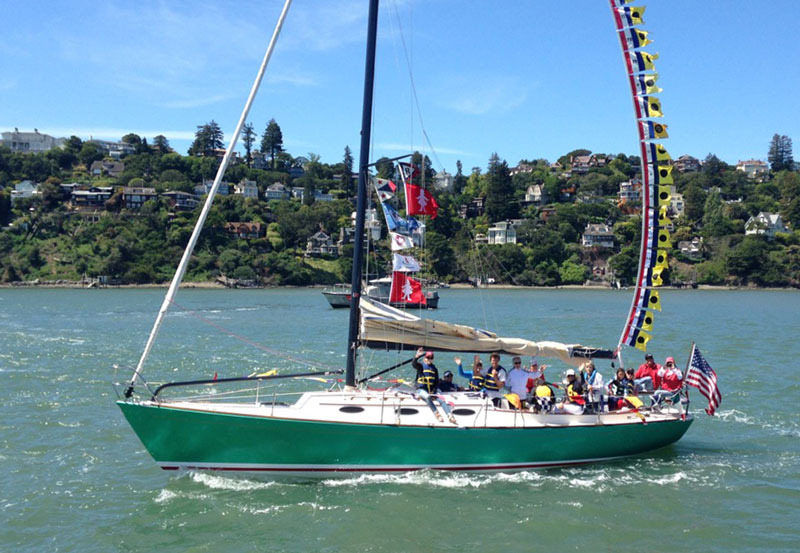
©Latitude 38 Media, LLC
From 10:30 a.m. to 12:30 p.m., an interfaith team of clergy on the 58-ft Trumpy Coastal Cruiser Aurora V will conduct the Blessing of the Pleasure Craft in Raccoon Strait.
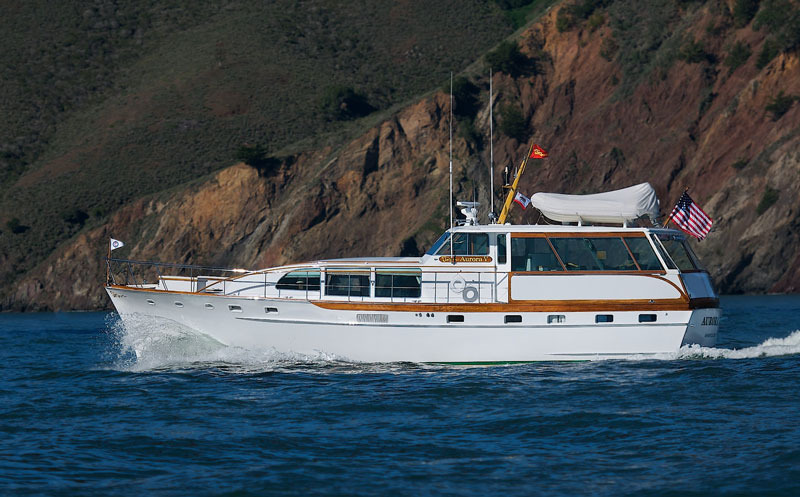
The parade will begin at noon off San Francisco’s Crissy Field; the theme this year is Cruising the Century. The grand marshal will be Lt. Colonel John Morrow, commander of the San Francisco District of the Army Corps of Engineers. See www.picya.org/od100 for more info and to register your boat in this year’s Opening Day happening April 23rd.
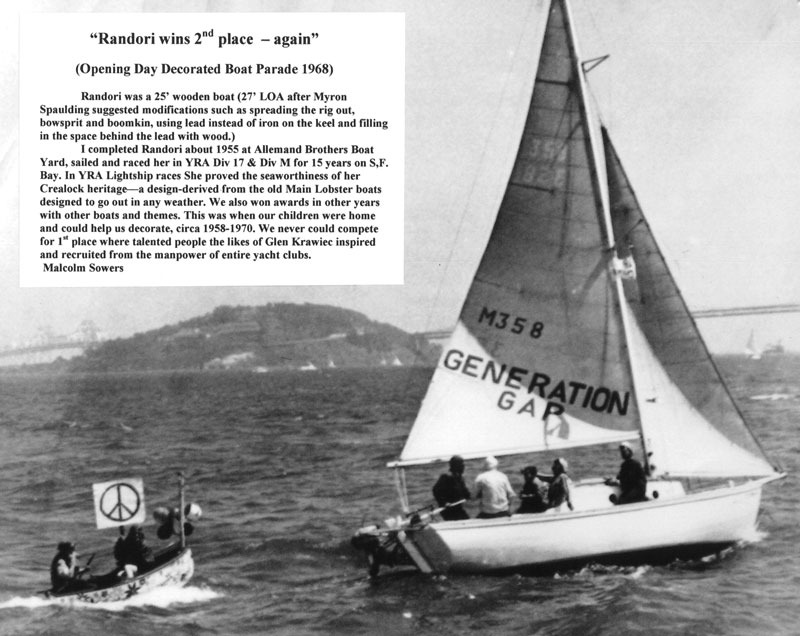
We’ll have a preview of other Opening Day celebrations around the region in a future ‘Lectronic Latitude post.
